International Lightning Class Association
Class contact information.
Click below
Class Email
Class Website
One-Design Class Type: Dinghy
Was this boat built to be sailed by youth or adults? Both
Approximately how many class members do you have? 1600
Photo Credit:Douglas Wake

Photo Credit: Art Petrosemolo
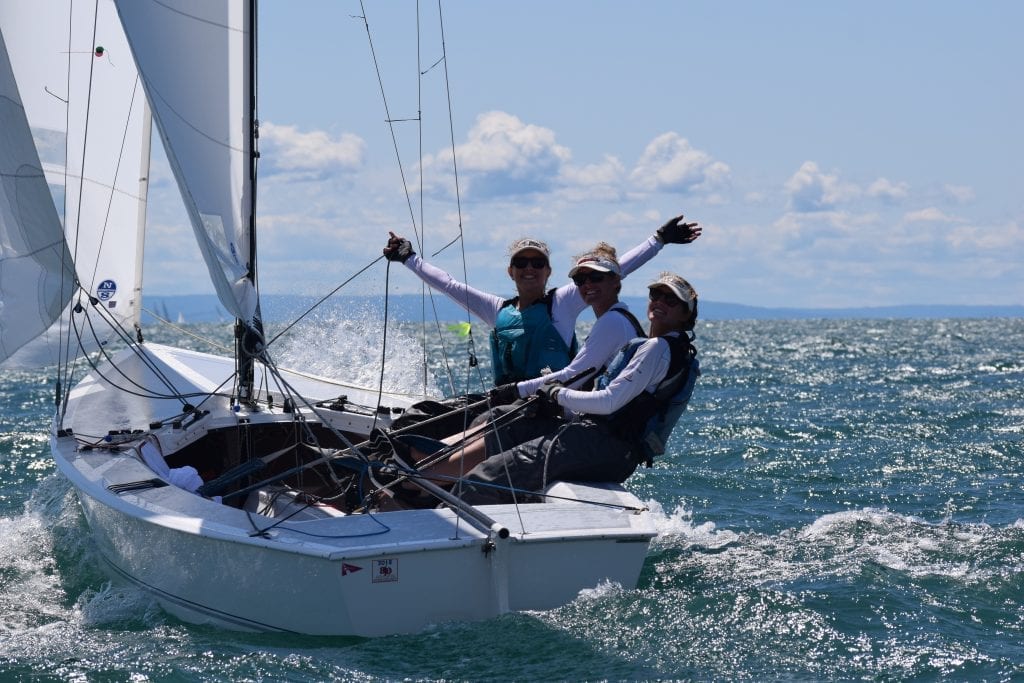

About International Lightning Class Association
The Lightning truly excels as an affordable racing boat. The rig is simple but offers sophisticated sail shape controls. The hull features a unique hard chine design that combines the stability that provides sail-carrying power, with flat bottom sections that promote planing. At 700 pounds all up, the trailerable centerboard sloop is tough enough to avoid frequent breakdowns, but light enough to plane wildly on the reaches. Membership is diverse with sailors aged 8 to 80+. Many families sail together at top events and it is common to see females make up at least 40% of competitors.
The Lightning is sailed in more than thirteen countries and in the Pan American Games. A World, Master World and Youth World Championships are held every two years. North American, South American and European Championships are held each year as are innumerable regional and District championships. Major regattas attract some of the finest sailors in the world, but you find Class members friendly and the sailmakers’ complete tuning guides helpful at getting you up to speed in a hurry.
The International Lightning Class Association is one of the oldest and best organized class associations in sailboat racing. Its primary purpose is to serve its membership, preserve the integrity of the Lightning and provide high-quality competitive events. In addition, the Lightning Class publishes monthly e-blasts and a quarterly newsletter Flashes with up-to-date regatta news, boat brokerage and ideas on how to get the most out of your Lightning. The professionally managed association and dedicated volunteers are always on hand to assist both current and potential members.
If you’re looking for a boat you can be proud to sail, one that offers dinghy handling with the performance of a sport boat, a refined design that’s free of fads, complete with the technology of today for both racing and day sailing – look at the Lightning.
Boats Produced: 15630+
Class boat builder(s):
Allen Boat Company, Buffalo, NY: https://www.allenboatco.com/
WindRider International: https://www.windrider.com/
Approximately how many boats are in the USA/North America? 11,000+
Where is your One-Design class typically sailed in the USA? List regions of the country:
East of the Mississippi, Mid-West, Texas, Denver, San Diego, Pacific Northwest Click Here for Fleet Finder Map: https://www.lightningclass.org/content.aspx?page_id=451&club_id=93488
Does this class have a spinnaker or gennaker? Yes
How many people sail as a crew including the helm? 3
Ideal combined weight of range of crew: 490
Boat Designed in 1938
Length (feet/inches): 19’0″
Beam: 6’6″
Weight of rigged boat without sails: 700 lbs
Draft: (board down): 4’11”, (board up): 5″
Mast Height: 26’2″
Back to One-Design Central
Copyright ©2018-2024 United States Sailing Association. All rights reserved. US Sailing is a 501(c)3 organization. Website designed & developed by Design Principles, Inc. -->

Published on August 26th, 2024 | by Editor
Lightning Class dangles a big carrot
Published on August 26th, 2024 by Editor -->
The health of one design dinghy classes was once secured by recruiting teen sailors as crew, and over time these young people would beg and borrow to become active class members. But in the 1980s, youth sailing programs in the USA began focusing on scholastic competition, and the flow of new blood slowed.
Since then, one design classes have launched various programs to capture the post-college crowd, with the International Lightning Class Association hosting its inaugural Lightning U32 Invitational Regatta for sailors aged 21-32 on August 24-25 at Buffalo Canoe Club in Ridgeway, ON.
The event, which provided boat charters and housing at no cost, filled 32 boats with nearly 100 young sailors current and new to the Lightning Class from across the country (and South America!) to experience the class camaraderie and competitive sailing.
If young people aren’t introduced to the options in sailing during their teen years, it is much harder to figure out how to stay active in their twenties. So, the Lightning Class dangled a big carrot, with the weekend consisting of a welcome cocktail party, on-shore lightning clinic, racing, regatta dinner, beach games, raffles prizes, and awards.

By all accounts, participants made new friends and created interest for their next Lighting event. Mission accomplished!
Event information – Photos – Results

Tags: growing the sport , Lightning
Related Posts
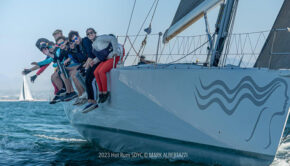
Fostering the future of offshore sailing →

Congrats to Magenta Project Class 2024 →
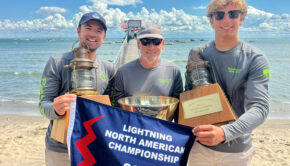
Lightning North American Champs →

Something for everyone at Lightning North Americans →
© 2024 Scuttlebutt Sailing News. Inbox Communications, Inc. All Rights Reserved. made by VSSL Agency .
- Privacy Statement
- Advertise With Us
Get Your Sailing News Fix!
Your download by email.
- Your Name...
- Your Email... *
- Comments This field is for validation purposes and should be left unchanged.

Yachting Monthly
- Digital edition

Sailing in lightning: how to keep your yacht safe
- In partnership with Katy Stickland
- July 22, 2022
How much of a concern is a lightning strike to a yacht and what can we do about it? Nigel Calder looks at what makes a full ‘belt and braces’ lightning protection system

Storm clouds gather at Cowes, but what lightning protection system, if any, does your boat have for anchoring or sailing in lightning? Credit: Patrick Eden/Alamy Stock Photo
Most sailors worry about sailing in lightning to some extent, writes Nigel Calder .
After all, going around with a tall metal pole on a flat sea when storm clouds threaten doesn’t seem like the best idea to most of us.
In reality, thunder storms need plenty of energy, driven by the sun, and are much less frequent in northern Europe than in the tropics.
However, high currents passing through resistive conductors generate heat.
Small diameter conductors melt; wooden masts explode; and air gaps that are bridged by an arc start fires.

Sailing in lightning: Lightning is 10 times more likely over land than sea, as the land heats up more than water, providing the stronger convection currents needed to create a charge. Credit: BAE Inc/Alamy Stock Photo
On boats, radio antennas may be vaporised, and metal thru-hulls blown out of the hull, or the surrounding fiberglass melted, with areas of gelcoat blown off.
Wherever you sail, lightning needs to be taken seriously.
Understanding how lightning works, will help you evaluate the risks and make an informed decision about the level of protection you want on your boat and what precautions to take.
Most lightning is what’s called negative lightning, between the lower levels of clouds and the earth. Intermittent pre-discharges occur, ionising the air.
Whereas air is normally a poor electrical conductor, ionised air is an excellent conductor.
These pre-discharges (stepped leaders) are countered by a so-called attachment spark (streamer), which emanates from pointed objects (towers, masts, or lightning rods) that stand out from their surroundings due to their height.

Summer is the season for lightning storms in the UK. Here, one finds early at Instow, Devon. Credit: Terry Matthews/Alamy Stock Photo
This process continues until an attachment spark connects with a stepped leader, creating a lightning channel of ionised air molecules from the cloud to ground.
The main discharge, typically a series of discharges, now takes place through the lightning channel.
Negative lightning bolts are 1 to 2km (0.6 to 1.2 miles) long and have an average current of 20,000A.
Positive lightning bolts are much rarer and they can have currents of up to 300,000A.
Preventing damage when sailing in lightning
A lightning protection system (LPS) is designed to divert lightning energy to ground (in this case the sea), in such a way that no damage occurs to the boat or to people.
Ideally, this also includes protecting a boat’s electrical and electronic systems, but marine electronics are sensitive and this level of protection is hard to achieve.
Lightning protection systems have two key components: First, a mechanism to provide a path with as little resistance as possible that conducts a lightning strike to the water.
This is established with a substantial conductor from an air-terminal to the water.

Components of an external and internal lightning protection system. Credit: Maxine Heath
This part of the LPS is sometimes called external lightning protection.
Second, a mechanism to prevent the development of high voltages on, and voltage differences between, conductive objects on the boat.
This is achieved by connecting all major metal objects on and below deck to the water by an equipotential bonding system.
Without this bonding system high enough voltage differences can arise on a boat to develop dangerous side flashes.
The bonding system can be thought of as internal lightning protection.
Rolling ball concept
Lightning standards, which apply ashore and afloat, define five lightning protection ‘classes’, ranging from Class V (no protection) to Class I.
There are two core parameters: the maximum current the system must be able to withstand, which determines the sizing of various components in the system, and the arrangement and number of the air terminals, aka lightning rods.
Let’s look at the arrangement of the air terminals first. It is best explained by the rolling ball concept.
A lightning strike is initiated by the stepped leaders and attachment sparks connecting to form the lightning channel.
The distance between the stepped leader and the attachment sparks is known as the breakdown distance or striking distance.
If we imagine a ball with a radius equal to the striking distance, and we roll this ball around an object to be protected, the upper points of contact define the possible lightning impact points that need to be protected by air terminals.

Lightning protection theories and classifications rely on a ‘rolling ball’ concept to define requirements, areas of risk and protected areas. Credit: Maxine Heath
The air terminal will theoretically provide a zone of protection from the point at which the terminal connects with the circumference of the rolling ball down to the point at which that circumference touches the water.
The shorter the striking distance, the less the radius of the rolling ball and the smaller the area within the protection zone defined by the circumference of the rolling ball.
The smaller the protection zone, the more air terminals we need. So, we use the shortest striking distance to determine the minimum number and location of air terminals.
Class I protection assumes a rolling ball radius of 20m; Class II assumes a rolling ball radius of 30m.
Continues below…

Lightning: why we were struck
A personal investigation into how and why a catamaran was hit by lightning

‘Lightning destroyed the boat’s electronics’
Paul Tinley recounts a truly shocking lightning experience aboard his Beneteau 393 Blue Mistress and the subsequent insurance claim

Expert advice: boating emergency
A boating emergency is the sort of thing that everyone taking to the water should be prepared for even if,…

How batteries can explode – and how to avoid it
Marine electrical expert Nigel Calder explains why boat batteries emit hydrogen and how to minimise the dangers
Boat building standards are based on a striking distance/rolling ball radius of 30m (Class II).
For masts up to 30m above the waterline, the circumference of the ball from the point at which it contacts the top of the mast down to the water will define the zone of protection.
For masts higher than 30m above the waterline, the ball will contact the mast at 30m and this will define the limit of the zone of protection.
If Class I protection is wanted, the radius of the ball is reduced to 20m, which significantly reduces the zone of protection and, on many larger recreational boats, may theoretically necessitate more than one air terminal.
Protection classes
With most single-masted monohull yachts, an air terminal at the top of the mast is sufficient to protect the entire boat to Class I standards.
The circumference of the rolling ball from the tip of the mast down to the surface of the water does not intercept any part of the hull or rig.
However, someone standing on the fore or aft deck might have the upper part of their body contact the rolling ball, which tells us this is no place to be in a lightning storm.
Some boats have relatively high equipment or platforms over and behind the cockpit.

Protection classes to protect your boat while anchored or sailing in lightning
These fittings and structures may or may not be outside the circumference of the rolling ball.
Once again, this tells us to avoid contact with these structures during a lightning storm.
Ketch, yawl, and schooner rigged boats generally require air terminals on all masts, except when the mizzen is significantly shorter than the main mast.
The external LPS
The external LPS consists of the air terminal, a down conductor, and an earthing system – a lightning grounding terminal.
The down conductor is also known as a primary lightning protection conductor.
All components must be sized to carry the highest lightning peak current corresponding to the protection class chosen.
In particular, the material and cross-sectional area of the air terminal and down conductor must be such that the lightning current does not cause excessive heating.
The air terminal needs to extend a minimum of 150mm above the mast to which it is attached.

A graph depicting NASA’s record of yearly global lightning events. The Congo once recorded more than 450 strikes per km2
It can be a minimum 10mm diameter copper rod, or 13mm diameter aluminum solid rod.
It should have a rounded, rather than a pointed, top end.
VHF antennas are commonly destroyed in a lightning strike.
If an antenna is hit and is not protected by a lightning arrestor at its base, the lightning may enter the boat via the antenna’s coax cable.
A lightning arrestor is inserted in the line between the coax cable and the base of the antenna.
It has a substantial connection to the boat’s grounding system, which, on an aluminum mast, is created by its connection to the mast.
In normal circumstances, the lightning arrestor is nonconductive to ground.
When hit by very high voltages it shorts to ground, in theory causing a lightning strike to bypass the coax – although the effectiveness of such devices is a matter of some dispute.
Down conductors
A down conductor is the electrically conductive connection between an air terminal and the grounding terminal.
For many years, this conductor was required to have a resistance no more than that of a 16mm² copper conductor, but following further research, the down conductor is now required to have a resistance not greater than that of a 20mm² copper conductor.
For Class I protection, 25mm² is needed. This is to minimise heating effects.
Let’s say instead we use a copper conductor with a cross-sectional area of 16mm² and it is hit by a lightning strike with a peak current corresponding to Protection Class IV.

Sailing in lightning: This catamaran relies upon cabling to ground from the shrouds but stainless steel wire is not a good enough conductor. Credit: Wietze van der Laan
The conductor will experience a temperature increase of 56°C. A 16mm² conductor made of stainless steel (for example, rigging ) will reach well over 1,000°C and melt or evaporate.
Shrouds and stays on sailboats should be connected into a LPS only to prevent side flashes.
The cross-sectional area of the metal in aluminum masts on even small sailboats is such that it provides a low enough resistance path to be the down conductor.
Whether deck- or keel-mounted, the mast will require a low resistance path, equivalent to a 25mm² copper conductor, from the base of the mast to the grounding terminal.
Grounding terminal
Metal hulled boats can use the hull as the grounding terminal. All other boats need an adequate mass of underwater metal.
In salt water this needs a minimum area of 0.1m². In fresh water, European standards call for the grounding terminal to be up to 0.25m².
A grounding terminal must be submerged under all operating conditions.
An external lead or iron keel on monohull sailing boats can serve as a grounding terminal.

This owner of this Florida-based yacht decided to keep the keel out of the equation when is came to a grounding plate. High electrical currents don’t like sharp corners, so a grounding plate directly beneath the mast makes for an easier route to ground. Credit: Malcolm Morgan
In the absence of a keel , the cumulative surface area of various underwater components – propellers, metal thru-hulls, rudders – is often more than sufficient to meet the area requirements for a grounding terminal.
However, these can only be considered adequate if they are situated below the air terminal and down conductor and individually have the requisite surface area.
Metal through-hulls do not meet this requirement.
If underwater hardware, such as a keel, is adequate to be used as the grounding terminal, the interconnecting conductor is part of the primary down conductor system and needs to be sized accordingly at 25mm².
Propellers and radio ground plates
Regardless of its size, a propeller is not suitable as a grounding terminal for two reasons.
First, it is very difficult to make the necessary low-resistance electrical connection to the propeller shaft, and second, the primary conductor now runs horizontally through the boat.
The risk of side flashes within the boat, and through the hull to the water is increased.

Sailing in lightning: GRP hull, fairing filler and iron keel will have carried different voltages during the strike – hence this damage
An engine should never be included in the main (primary) conducting path to a grounding terminal.
On modern engines, sensitive electronic controls will be destroyed in a lightning strike, and on all engines, oil in bearings and between gears will create resistance and therefore considerable heat which is likely to result in internal damage.
However, as it is a large conductive object, the engine should be connected to the internal lightning protection system.
Internal lightning protection
On its way to ground, lightning causes considerable voltage differences in adjacent objects – up to hundreds of thousands of volts.
This applies to boats with a functioning external lightning protection system but without internal protection.
Although the lightning has been given a path to ground along which it will cause as little damage as possible, dangerous voltages can be generated elsewhere, resulting in arcing and side flashes, threatening the boat and crew, and destroying electronic equipment.
We prevent these damaging voltage differences from arising by connecting all substantial metal objects on the boat to a common grounding point.

One of the holy grails of marine photography – a direct lightning strike on a yacht’s mast. Credit: Apex
The grounding terminal is also wired to the common grounding point.
By tying all these circuits and objects together we hold them at a common voltage, preventing the build-up of voltage differences between them.
All conductive surfaces that might be touched at the same time, such as a backstay and a steering wheel, need to be held to the same voltage.
If the voltages are the same, there will be no arcing and no side flashes.
The bonding conductors in this internal LPS need to be stranded copper with a minimum size of 16mm².
Note that there can be bonding of the same object for corrosion prevention, lightning protection, and sometimes DC grounding.
We do not need three separate conductors.
Electronic Device Protection
With lightning protection systems, we need to distinguish electric circuit and people protection from device protection.
Even with an internal LPS, high induced voltages may occur on ungrounded conductors (such as DC positive) which will destroy any attached electronics.
A mechanism is needed to short high transient voltages to ground.
This is done with surge protection devices (SPD), also known as transient voltage surge suppressors (TVSS) or lightning arrestors.

Marine-specific SPDs are few in number and domestic models are not suitable for boats
In normal circumstances these devices are non-conductive, but if a specified voltage – the clamping voltage – is exceeded they divert the spike to ground.
There are levels of protection defined in various standards depending on the voltages and currents that can be handled, the speed with which this occurs, and other factors.
This is a highly technical subject for which it is advisable to seek professional support.
Most SPDs are designed for AC circuits.
When it comes to DC circuits there are far fewer choices available to boat owners although there are an increasing number for solar installations that may be appropriate.
There is no such thing as a lightning-proof boat, only a lightning-protected boat, and for this there needs to be a properly installed LPS.

Nigel Calder is a lifelong sailor and author of Boatowner’s Mechanical and Electrical Manual. He is involved in setting standards for leisure boats in the USA
Even so, in a major strike the forces involved are so colossal that no practical measures can be guaranteed to protect sensitive electronic equipment.
For this, protection can be provided with specialised surge protection devices (SPDs).
The chances of a direct lightning strike on a yacht are very small, and the further we are north or south of the equator, the smaller this chance becomes.
It’s likely your chances of receiving a direct lightning strike are very much higher on a golf course than at sea.
‘Bottle brush’-type lightning dissipators are claimed by sellers to make a boat invisible to lightning by bleeding off static electrical charge as it builds up.
The theory rests upon the concept that charged electrons from the surface of the earth can be made to congregate on a metal point, where the physical constraints caused by the geometry of the point will result in electrons being pushed off into the surrounding atmosphere via a ‘lightning dissipator’ that has not just one point, but many points.
It is worth noting that the concept has met with a storm of derision from many leading academics who have argued that the magnitude of the charge that can be dissipated by such a device is insignificant compared to that of both a cloud and individual lightning strikes.
It seems that the viable choices for lightning protection remain the LPS detailed above, your boatbuilder’s chosen system (if any), or taking one’s chances with nothing and the (reasonable) confidence that it’s possible to sail many times round the world with no protection and suffer no direct strikes.
Whichever way you go, it pays to stay off the golf course!
Enjoyed reading Sailing in lightning: how to keep your yacht safe?
A subscription to Yachting Monthly magazine costs around 40% less than the cover price .
Print and digital editions are available through Magazines Direct – where you can also find the latest deals .
YM is packed with information to help you get the most from your time on the water.
- Take your seamanship to the next level with tips, advice and skills from our experts
- Impartial in-depth reviews of the latest yachts and equipment
- Cruising guides to help you reach those dream destinations
Follow us on Facebook , Twitter and Instagram.
- MyNewMarkets.com
- Claims Journal
- Insurance Journal TV
- Academy of Insurance
- Carrier Management

Featured Stories
- Uber Hit by Record $324M Fine for Data Transfers
- Lowe’s Scraps Some DEI Policies as Activist Claims Win
Current Magazine

- Read Online
London-Based Ship Registry Helps Russia Oil Tankers Keep Running
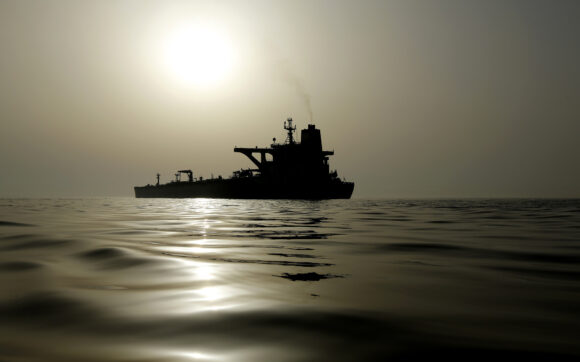
Three oil tankers that are under British sanctions for transporting Russian petroleum are sailing under the flag of a nation that bases its operations in London.
The Galaxy, the Liberty and the Rigel, all of which moved barrels for Moscow this year, have switched to sail under the flag of Barbados, one of the world’s more-reputable vessel-registration nations, industry data show. The Barbados Maritime Ship Registry is based at the country’s High Commission in London, which has diplomatic immunity.
The London connection will nevertheless be awkward for the British government, which designated all three tankers this summer for the role they played in helping to destabilize Ukraine. At that point, they had different names, were owned by the Russian state tanker company Sovcomflot, and sailed under the flag of Gabon.

Merchant ships will very often sail under what are known as open registries in countries that are unrelated to where the vessels are beneficially owned. This can be to make compliance with international maritime regulations more efficient and cost effective. Those so-called flag states have an important role to play in ensuring industry safety standards.
The UK’s Foreign, Commonwealth and Development Office referred questions to the Treasury. The Treasury didn’t immediately respond to a request for comment. Giovanni Ciniglio, the chief executive officer of the Barbados registry, confirmed the ships are provisionally registered under the country’s flag, but declined to comment further.
As well as specific sanctions on the ships, the UK is also participating in a price cap on Russian oil. Under the Group of Seven initiative, companies aren’t allowed to provide key services for Russian shipments unless the cargoes being transported cost at – or below – certain thresholds. In the case of crude oil, that limit is $60 a barrel.
To get a Barbadian flag is good news for the three tankers. The country is on a so-called White List, published by the Paris Memorandum of Understanding on Port State Control, of nations that maintain higher standards of ship safety. Gabon doesn’t have a ranking.
Since the UK sanctions, ownership of two of the tankers has switched to “unknown” entities on maritime databases.
The Liberty, formerly NS Laguna, loaded a cargo of Russian Urals crude at Primorsk on the Baltic Sea on Aug. 16 and is now in the English Channel. Its ultimate destination is India, according to shipping information gathered by Bloomberg.
The Rigel, formerly Primorsky Prospect, recently entered the Mediterranean Sea via the Suez Canal after delivering a cargo of Russian crude to India.
The Galaxy, formerly Korolev Prospect, arrived off Russia’s Arctic port of Murmansk on Aug. 12 after transiting the Northern Sea Route from the Bering Strait.
It is one of two ships that were previously named as entering a long-term charter to Russia’s Sakhalin 2 project. Before taking up that role it requires modification, work that it may be about to undergo at Murmansk.
Photograph: An oil tanker sail at sunset. Photo credit: Marcelo del Pozo/Bloomberg
- Oil Tanker Insurance Payouts at Risk After UK’s Russia Sanctions
- UK Puts First Sanctions on Russia’s Shadow-Fleet Oil Tankers
Topics Energy Oil Gas Russia London
Was this article valuable?
Thank you! Please tell us what we can do to improve this article.
Thank you! % of people found this article valuable. Please tell us what you liked about it.
Here are more articles you may enjoy.

Written By Julian Lee
Written by alex longley, interested in energy .
Get automatic alerts for this topic.
- Categories: International & Reinsurance News Topics: marine cargo insurance , marine hull insurance , marine insurance , marine liability insurance , oil tanker insurance , oil tankers , protection and indemnity (P&I) , Russia sanctions , Russia Ukraine war , Russian oil and gas , shadow oil tankers
- Have a hot lead? Email us at [email protected]

Insurance Jobs
- Data Analyst – Insurance – REMOTE - Remote
- Business Analyst – Insurance Operations – REMOTE - Remote
- Healthcare Financial/Actuarial Associate Director - Charlotte, NC
- Insurance Agency Accountant / Insurance Financial Specialist - St Louis, MO (onsite)
- Client Advocate - Nashville, TN

- Condos: A Difficult Market to Navigate
- Inflation, the Economy and Workers’ Comp: A Positive Outlook
- Umbrella Liability: The Triple Upsell Possibility for Personal Lines Clients
- Where the AI Risks Are: Swiss Re's Top 10 Ranking by Industry
- How to Succeed in the Entertainment Insurance Business: Get creative producing with a small cast of underwriters and limited capacity.

- Judge Denies Sanction Bid by Truth Social Co-Founders Over Share Value
- Atlantic Hurricane Season Could Intensify in Coming Weeks, Meteorologists Say
- Storm Warnings Across Southern Europe From Italy to Serbia
- CrowdStrike Earnings to Shed Light on Fallout From Global Windows Outage
- Wildfire Risk Harms California Home Values, San Francisco Fed Study Finds

- August 22 HO-14: More Than a Mature HO-4
Potomac River Sailing Association
Lightning fleet.
2024 Dixie District Championship Regatta & Doc Gilbert Potomac Cup Regatta Website
March 2024 Annual Meeting Notes and Documents
Archive of Fleet 50 Posts
Lightning Fleet 50: A PRSA Fleet Sailing on the Potomac River Since 1943
Established in 1943, Fleet 50 is proud to carry on the tradition of the Lightning as the longest enduring, most competitive and fun one-design racing class in the Washington DC area. We are affiliated with the Potomac River Sailing Association and the International Lightning Class Association .
We currently have about 25 active and semi-active boats. Our racing schedule runs from the beginning of April through the mid-November each year. The racing season includes an eight-week Sunday Spring and an eight-week Sunday Fall series. In addition we host the Doc Gilbert Potomac Cup in early May (our Dixie District Lightning Regatta) and participate in the PRSA Spring Regatta (Memorial Day weekend) and in the PRSA President’s Cup in September. Many of our members also travel to Lightning regattas on the International Lightning Class Association regatta circuit . No fewer than 5 and sometimes as many as 15 boats are out racing on any given Sunday, with many more on the water for our 2-day regattas. After the racing, skippers and crews hang around the grill and trade stories about starts, mark roundings, and other tall tales from the river.
Fleet 50 members display a wide range of sailing experience consisting of seasoned veteran Lightning sailors as well as several first time boat owners. The range of skill levels will challenge serious racers looking for good competition while providing fun competitive camaraderie in the middle and back of the fleet. The more experienced sailors are also always ready and willing to offer advice and instruction to newer sailors looking to improve. Our post race BBQs also have many beers, burgers, and hot dogs to go around.
The skippers in our Lightning Fleet 50 have vast experience buying used but ready-to-race Lightnings (recommended) to major restoration projects (if you are so inclined). They would love to help you buy a Lightning that fits your budget and interests. If you are interested in Fleet 50, feel free to reach out to us (contact information at the bottom of this page). You should also feel free to come down to the docks anytime we are scheduled to be out on the water. Someone will always be looking for a crew!
The Boat: The Best of Both Worlds – Family Sailing and World Class Racing
The Lightning is a 19-foot centerboard sloop designed by Sparkman & Stephens as an affordable family day sailing and racing boat. The Lightning Class is the longest operating and best-organized one-design sailing class in the world. With more than 15,000 hulls built for 500 fleets worldwide, the Lightning has evolved into one of the most popular and competitive one-design racing classes in the world!
The hull features a hard chine and centerboard for stability, with flat bottom sections that promote planing. The simple rig makes it easy to sail but offers plenty of adjustment for sail shape fine-tuning of the mainsail, jib, and spinnaker. The Lightning is easy to launch and light enough to trailer with ease. In the event of a capsize, she can be righted and sailed dry by her crew.
Normally, raced with a crew of three the boat has plenty of room in the cockpit for two couples or a family to day sail. Whether racing or day sailing, the Lightning offers a rare combination of performance and stability!
Get Involved!
1) Join the Lightning Fleet 50 email list by clicking here for instructions on join our Fleet 50 Google Group .
2) Visit the listing of archives (link at top of page) to read reports from past races and events..
3) Email or call one of the fleet officers or fleet experts:
- Fleet Captain: Frank Gallagher
- Secretary: Lindsay Bach
- Treasurer: Jeff Witten
- Scorer: Nabeel Alsalam
- Fleet Expert: Frank Gallagher , has bought and sold many Lightnings in his almost 50 years sailing them.
- Fleet Expert: Bobby Astrove , wooden boat guru and head of the ILCA Classic Boat Division
4) Take a look at the calendar and come down to the marina around 9:30 on a Sunday Series day to meet our sailors and watch the crews set up their boats. Bring your sailing gear with you because one or more may be short a crew!
One Design Racing In The Nation's Capital Since 1935

- Forum Listing
- Marketplace
- Advanced Search
- About The Boat
- Gear & Maintenance
- SailNet is a forum community dedicated to Sailing enthusiasts. Come join the discussion about sailing, modifications, classifieds, troubleshooting, repairs, reviews, maintenance, and more!
Lightning Class Sailboat
- Add to quote
New owner of a Lightning - Newport Boats 279. Needs some TLC & repairs. Any suggestions for suppliers, etc. would be appreciated
Check here: ILCA Manufacturers / Equipment List Allen and Nichols still make Lightnings. Check the lightningclass.org website too. They have a classifieds section for folks to sell parts and boats. APS sells a bunch of Lightning gear/accessories: APS - Lightning Sailboat Parts and Accessories Fun, fast boats.
Almost exactly a year later......I just picked up Newport Boats Lightning hull #249. This is a fiberglass boat, with wood trim. Nowhere near the sophistication of the newer boats, and the hull # isn't in any sequence with the Class boats. It's probably a Cali boat, as it had a Cali license plate on the trailer. Wonder if anyone can identify the year it was built?
For a few years I had Lightning #11046. I called the ILCA class office and they looked up the maker for me which turned out to be Clark. They might know more about Newport made Lightnings. Worth a shot. Welcome to the International Lightning Class Not all Lightnings were set up with full racing rigging and the boat can be sailed just fine with just a basic setup.
I bought a 1968 Lippincott last year. A little dowdy, but nothing some paint, elbow grease and a new rub rail won't cure. Great Lakes Skipper and Jamestown Distributors look to be pretty good.
Lightning centerboard extraction I have lightning and am wanting to extract the centerboard to remove the paint. Any suggestions on a one man extraction? Is it possible to extract with the boat on the trailer?
Keifp, The board weighs about 300 pounds and to remove it, you remove the pivot pin or bolt on the bottom front end of the trunk. The board then drops out of the bottom of the boat. I can't imagine any way it could be done with the boat on the trailer. James
Hi, New to the forum. I have 2 old wooden lightnings that I'm restoring (#9469 & #4677). Both have mast steps that are quite different and rotten. The plans have very little detail on mast steps, and even though I wrote to the Lightning Association, I never heard back from them. Does anyone out there have any pictures, drawings or other details on the Lightning mast step or know where to find any of these? Thanks, Dane
Dane, I have found that it is best to actually use the phone to call the ILCA office. If you can get the right person on the line they can look up the mfr'r of your hull #s (9469 & 4677). They should be able to tell you the builder which, with more research may point to how the builders implemented the mast step. On the Lightning I owned (#11416, frp by Clark) the mast step was a metal track or channel perhaps 3" wide (wide enough for the mast to fit into) that used bolts to adjust the fwd/aft rake of the mast foot step. The sides of the channel had many different holes for the bolts so it was adjustable, with some fumbling. You may be able to design a more elegant adjustable setup for the mast step. I'm thinking more along the lines of a main sail traveler car. If you are interested in racing these boats the 1 Class rules are quite specific as to what hardware is allowed, or not. If you are just doing it for fun then have at it. Your email address has your website in it: Dane F. Jensen Design Enjoy.
Hello....just acquired a Lighting. Hull 13124. Need more information on rigging and such. Also really need to buy a new rub rail. I hope they have a rubber one. Any ideas where to find some? Thanks!
Again, go to Lightningclass.org.
Hey everyone! I just bought a lightning, im trying to find out what year and the builder.. i cant seem to find out how?! My hull number is 14052...id like to know about the boat and what shes worth! Thanks in advance 🙂
Hi dfjensen ! Just call the office like CalebD said they will put you in touch with the wood boat guy ! I don't recall his name, but is a wealth of info on the woodies ! KeifP you have to pull board up, as the stop pin will not allow you to drop it down through the trunk, unless you can remove the pin ! Been there, done that ! of all the Lightnings I have owned, now 9833 all boards had to be pulled up to get out ! It is actually good to be on the trailer, if the board rests on the rollers, if it has them ! if you remove the trim piece at the back of the trunk it will lift right out !
Home - International Lightning Class Association They have a database of hull #s and mfr'rs so they can tell you who the maker is. You may have to contact them by phone. As for what it is worth? There is a "for sale" section in that website with a fair amount of boats for sale, usually. Your boat should be worth what other similarly numberd boats are selling for. Condition counts for a lot.
- ?
- 176.1K members
Top Contributors this Month
Great choice! Your favorites are temporarily saved for this session. Sign in to save them permanently, access them on any device, and receive relevant alerts.
- Sailboat Guide
Lippincott Boat Works
Founded by Robert and Howard Lippincott and located in Riverton, NJ USA. Best known as a builder of one-design racing yachts such as the LIGHTNING, STAR, and COMET. In the late 1950s, the Lippincotts were at the forefront of the transition from wood to fiberglass construction and became the standard for a number of classes where they were consistently seen at the head of the fleet in national and international competition. During the early 1980’s, Lippincott built some larger yachts including the LIPPINCOTT 30 and 36. No longer in business.
Associations
- Star class - International
- Comet Class (USA)
- Boatbrochure.com (orig. brochures and manuals)
- Lightning Class (Int)
- Blue Jay Class Association
- C. Lowndes Johnson
- Francis Sweisguth
- Howard Lippincott Jr.
- Owen P. Merrill
- Robert B. Harris
- Sparkman & Stephens
8 sailboats built by Lippincott Boat Works

Star (International)

Comet OD (Usa)

Lippincott 30
Lippincott 36.
- About Sailboat Guide
©2024 Sea Time Tech, LLC
This site is protected by reCAPTCHA and the Google Privacy Policy and Terms of Service apply.
- Print This Page
- Text Size
- Scroll To Top

A Brief History of the Lightning
Part i — the origins of the idea.
| Sponsor Number | URL address |
|---|---|
| Sponsor 1 | https://www.marksetbot.com/ |
| Sponsor 2 | http://www.onedesign.com/Default.aspx |
| Sponsor 3 | https://www.thesailinginc.com/lightning |
| Sponsor 4 | http://nickelsboats.com/ |
| Sponsor 5 | http://awardandsports.securesites.net/ |
| Sponsor 6 | http://www.capitallogoinc.com/shop/pc/home.asp |
| Sponsor 7 | http://www.rookesails.com/ |
| Sponsor 8 | http://www.sailorstailor.com |
| Sponsor 9 | https://www.harken.com/ |
| Sponsor 10 | http://www.sailorstailor.com |
Lightning Class Supporters







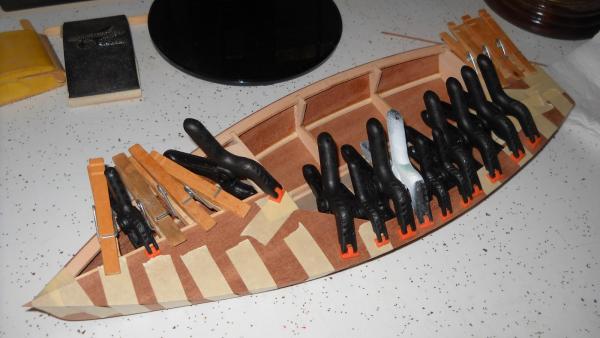
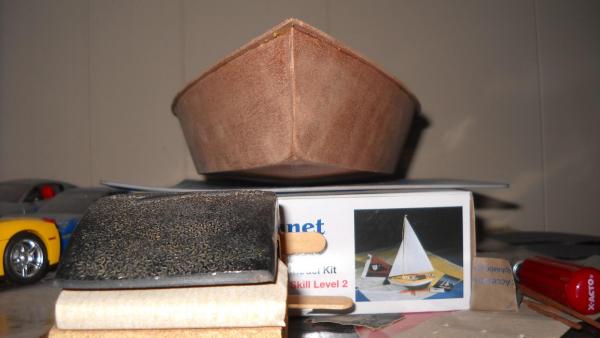
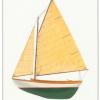
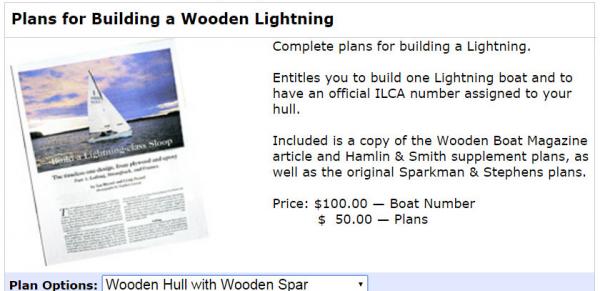
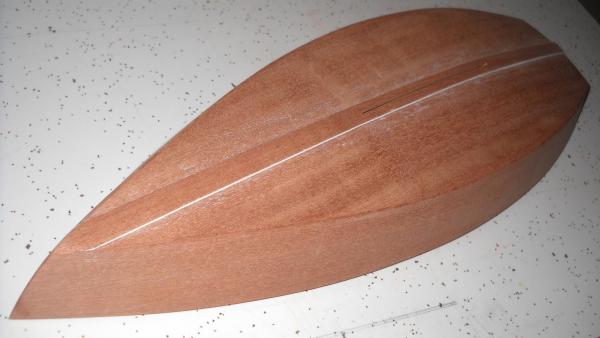
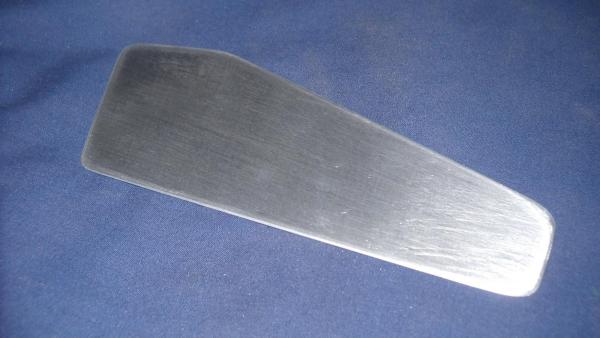
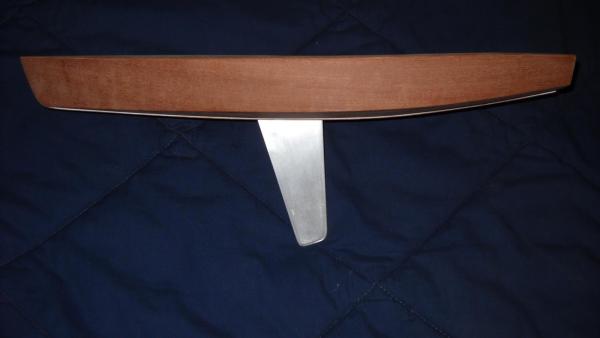
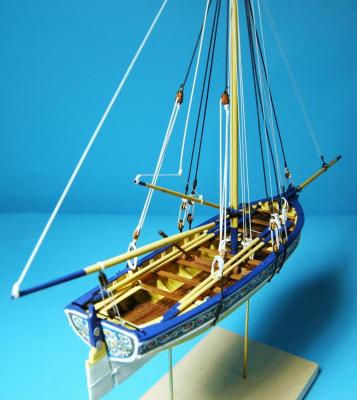
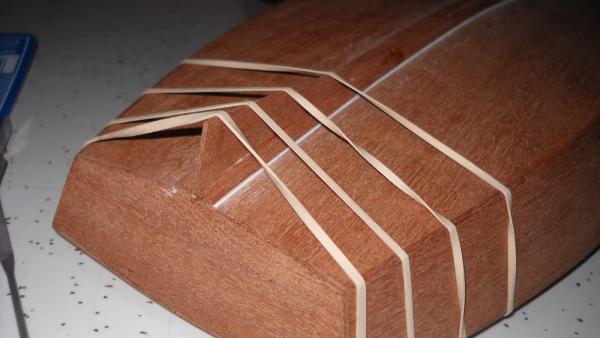


IMAGES
COMMENTS
The Lightning, a 19-foot trailerable centerboard sloop, was originally designed by Sparkman & Stephens as an affordable family day-sailor and racing boat. She has evolved into one of the most popular
All royalties for many of the boat's components, including the hull, mast, and sails go to the International Lightning Class Association, who also regulates the design and the Class activities.
Awarded ISAF International Class status, the Lightning is sailed in more than thirteen countries and in the Pan American Games, and the Class provides a professionally-managed association that is among the largest in all of one-design sailing. The Lightning's rig is simple but offers sophisticated sail shape controls.
The International Lightning Class Association is one of the oldest and best organized class associations in sailboat racing. Its primary purpose is to serve its membership, preserve the integrity of the Lightning and provide high-quality competitive events. In addition, the Lightning Class publishes monthly e-blasts and a quarterly newsletter ...
Boat Register. Following some discussion at the last AGM, we have revised the Boat Register to include more information. All possible boat numbers are now listed, however, details are blank where we have no information about the current whereabouts of the boat, or the owner. Also now included is the build year, something requested by a number ...
Why Sail a Lightning? There are a large number of single handed dinghies to choose from, so what makes the Lightning stand out? Before answering that we would encourage you first to think about the kind of sailing you want to do and what you find enjoyable.
Lightning. The Lightning is a recreational sailboat, initially built with wooden plank construction and, since the early 1960s, of fiberglass with wood trim. It has a fractional sloop rig with wooden or aluminum spars. The rig employs a backstay, anchored off center, so as to not impede the tiller.
One of the most popular one-design classes in the US since the 1940's. But fleets also exist in other parts of the world. Although originally designed for wood planked construction, nearly all boats since the early 1960's have been built of fiberglass. Ballast above is max weight of centerboard.
The event, which provided boat charters and housing at no cost, filled 32 boats with nearly 100 young sailors current and new to the Lightning Class from across the country (and South America!) to ...
How much of a concern is sailing in lightning? Nigel Calder looks at what makes a full 'belt and braces' lightning protection system
One man has died and six people are missing after a luxury yacht sank in freak weather conditions off the coast of Sicily. The 56m British-flagged Bayesian was carrying 22 people - 12 passengers ...
Emergency workers in southern Italy are still hunting for six people missing after a tornado sank a luxury yacht early Monday - prompting an air and naval operation off the coast of Sicily.
Three oil tankers that are under British sanctions for transporting Russian petroleum are sailing under the flag of a nation that bases its operations in London.
The boat received an enthusiastic response from the yachting world, and production began in earnest the following year. Lightning #167 was one of approximately 112 Lightnings built by Skaneateles Boats, Inc. in 1939, the first year of production. Records indicate that the boat was sold to Ward's Sporting Goods Store, a dealer in Ogdensburg ...
Lippincott Boat Works (USA) Founded by Robert and Howard Lippincott and located in Riverton, NJ USA. Best known as a builder of one-design racing yachts such as the LIGHTNING, STAR, and COMET. In the late 1950s, the Lippincotts were at the forefront of the transition from wood to fiberglass construction and became the standard for a number of ...
Authorities in Italy have opened a manslaughter investigation into the sinking of superyacht, the Bayesian, which killed seven people off the coast of Sicily earlier this week.
Preowned racing, cruising, dailsailer, and multihull sailboats for sale, including Beneteau, Burger , Cal, Catalina, C & C, Cheoy Lee, Columbia, Coronado, Corsair ...
Lightning Fleet 50: A PRSA Fleet Sailing on the Potomac River Since 1943 Established in 1943, Fleet 50 is proud to carry on the tradition of the Lightning as the longest enduring, most competitive and fun one-design racing class in the Washington DC area. We are affiliated with the Potomac River Sailing Association and the International Lightning Class Association.
Rescuers were on Monday searching for six people missing after a luxury yacht was hit by a tornado and sank off the coast of Sicily, killing one of the 22 people on board.
A couple weeks ago, my sister-in-law and I bought a small 19ft Lightning Class Sailboat (referred to as "Lightning"), specifically a 1969 Lippincott. "What is a Lightning Class sailboat?" you might ask, the Lightning was designed in 1938 by Sparkman & Stephens. Lightning's are considered a one-design boat, because since 1938 the shape ...
Equipment Rigging District Measurers Boat Registry Documents Marketplace Classifieds Info
Lightning Class Sailboat. New owner of a Lightning - Newport Boats 279. Needs some TLC & repairs. Any suggestions for suppliers, etc. would be appreciated. Allen and Nichols still make Lightnings. Check the lightningclass.org website too. They have a classifieds section for folks to sell parts and boats.
Lightning is a 18′ 11″ / 5.8 m monohull sailboat designed by Sparkman & Stephens and built by Clark Boat Company, Lippincott Boat Works, Nickels Boat Works, Inc., Allen Boat Co., Helms - Jack A. Helms Co., J.J. Taylor and Sons Ltd., Lockley Newport Boats, Skaneateles Boat & Canoe Co., Mobjack Man...
Founded by Robert and Howard Lippincott and located in Riverton, NJ USA. Best known as a builder of one-design racing yachts such as the LIGHTNING, STAR, and COMET. In the late 1950s, the Lippincotts were at the forefront of the transition from wood to fiberglass construction and became the standard for a number of classes where they were ...
The Lightning's lineage begins in 1876 with the formation of Bowdish and Company. Bowdish quickly developed a reputation for building fine small steam launches, rowboats, canoes, and sailing canoes. In 1890 a young boatwright named George Smith joined the company. In 1893, Smith and his partner, James Ruth purchased Bowdish and Company and ...
Lightning preowned sailboats for sale by owner. Lightning used sailboats for sale by owner.
The Lightning has some significance to me, not really personally, as I have never been in one, but I work at the Skaneateles Country Club, where the first Lightning was launched in 1938. My end goal is to have it displayed in the club dining room and replace the tired old Revell 1:96 Cutty Sark that has resided there for many years and has a great many broken pieces and tangled, dusty rigging.